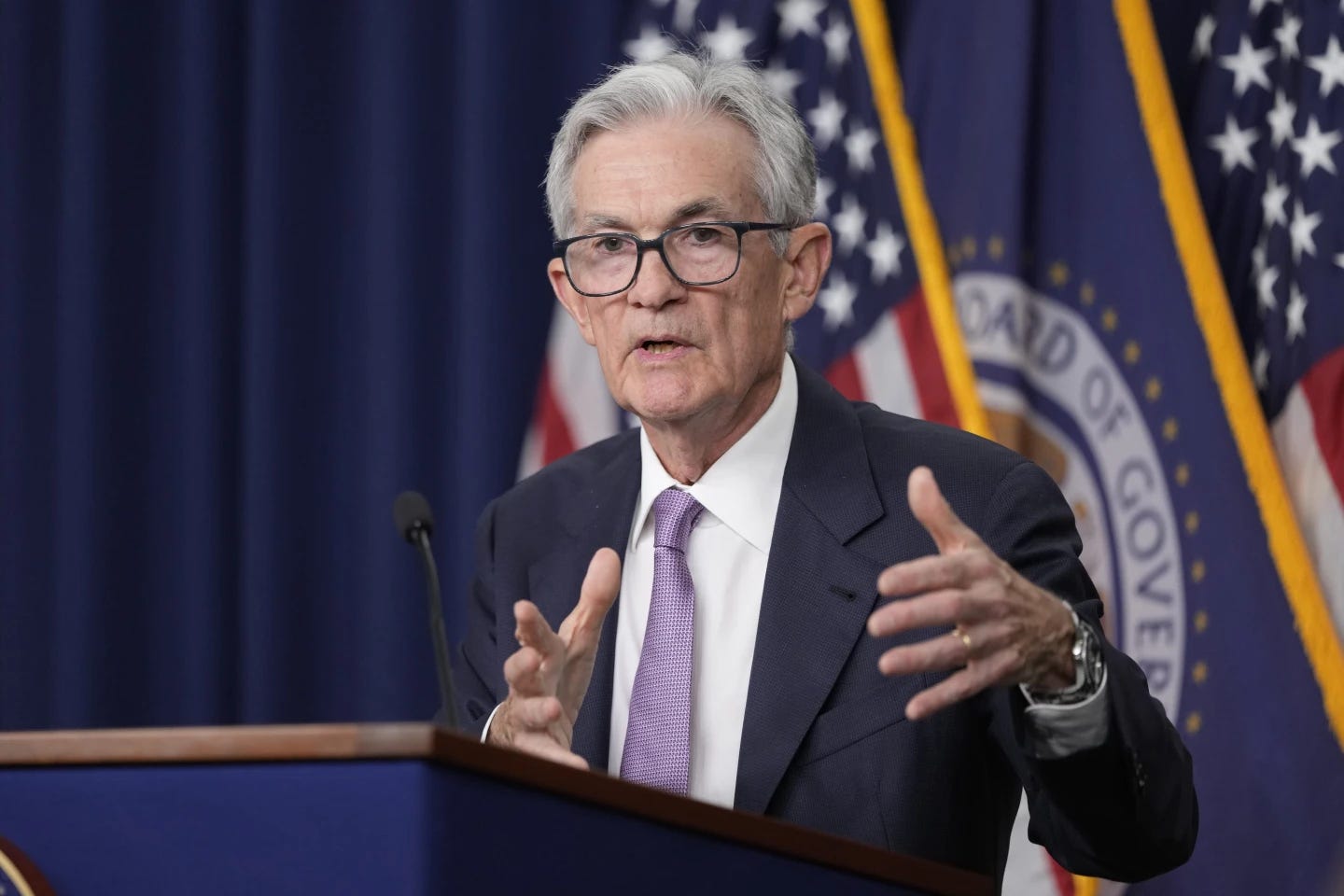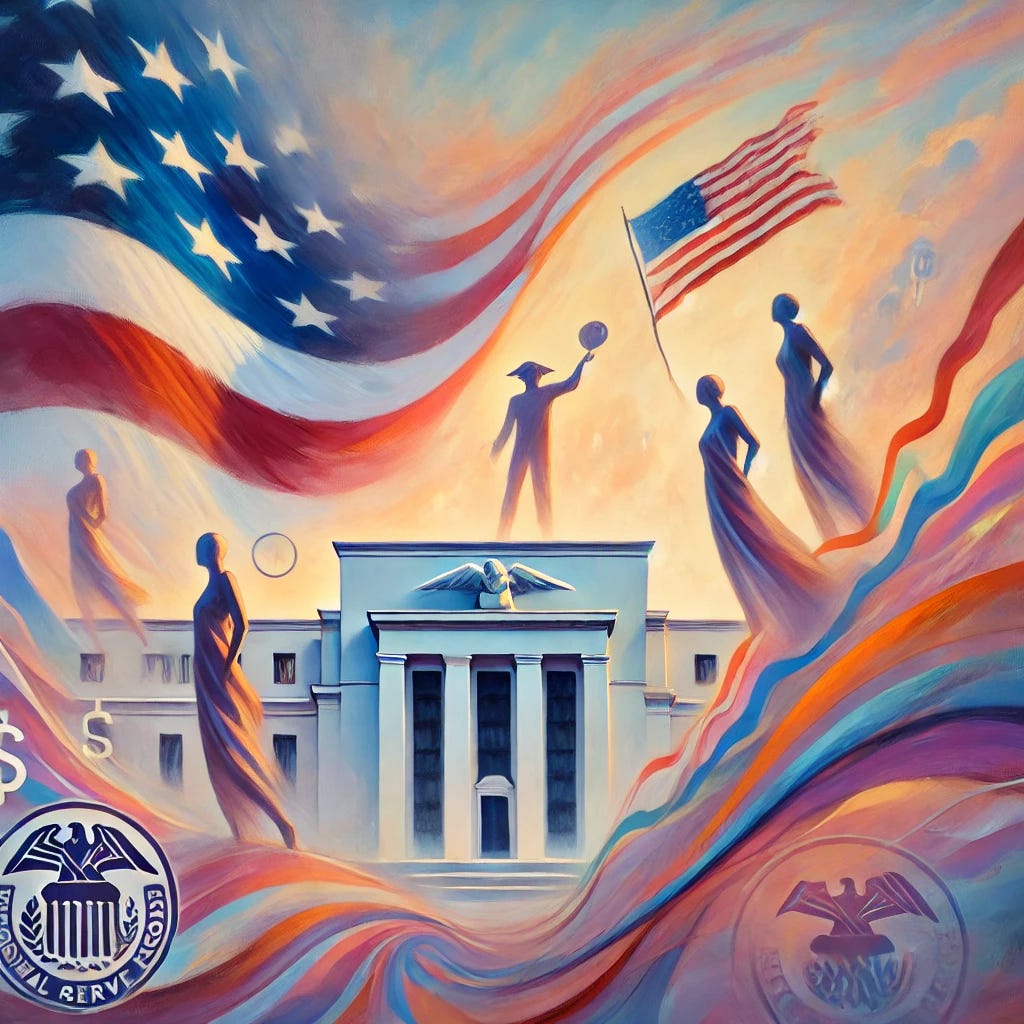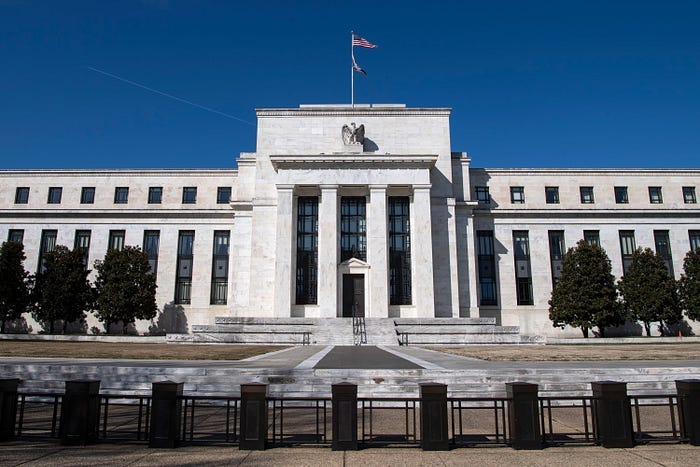US Federal Reserve Surprises with 0.5% Rate Cut, Signaling the End of the Inflation Battle
The Fed has signaled further cuts, expecting to reduce the rate by another half-point later this year, followed by four more cuts in 2025 and two in 2026.
Federal Reserve Cuts Interest Rates for the First Time Since 2020
Introduction – The “Kindest Cut of Them All”
In a bold decision and a significant shift in monetary policy, U.S. Federal Reserve Chairman Jerome Powell announced on September 18, 2024, that the Federal Reserve has reduced its benchmark interest rate by 0.5%. This marks the largest cut since the early days of the COVID-19 pandemic in March 2020, bringing the key interest rate down to 4.8%. After more than two years of elevated rates aimed at tackling the highest inflation in four decades, the move reflects the Fed's growing confidence that inflation is now under control, having dropped from a peak of 9.1% to a manageable 2.5%. Powell further signaled additional rate reductions, including another 0.5% cut by the end of the year, followed by four cuts in 2025 and two more in 2026. This policy shift represents a pivotal moment for U.S. consumers and the global economy, with far-reaching implications.
Section 1: A Victory Over Inflation
The Scale of the Rate Cut
The Federal Reserve's decision to slash the interest rate by 50 basis points is the most substantial move since the pandemic’s early days. The cut brings the benchmark rate down from a previous high of 5.3%, indicating the Fed's confidence that inflation is now largely under control. While inflation has fallen significantly, the Fed is taking a proactive approach to ensure economic stability, particularly as the job market shows signs of slowing.
Future Rate Cuts
The Fed has signaled further rate cuts, planning to lower rates by another 0.5% later this year and continuing with a series of cuts through 2025 and 2026. Federal Reserve Chair Jerome Powell, while optimistic about the progress in combating inflation, remains cautious and has avoided declaring the inflation fight completely over. These future cuts indicate a long-term strategy of gradual easing aimed at stimulating the economy while maintaining control over inflation.

Section 2: Key Takeaways – What It Means for Consumers
Impact on U.S. Consumers
The interest rate cut offers both opportunities and risks for U.S. consumers. On the positive side, borrowing costs are likely to decrease, affecting everything from mortgages and auto loans to credit cards. For instance, mortgage rates, which have already been trending downward, may fall further, making homeownership more accessible. Auto loan rates could also become more favorable, particularly for borrowers with strong credit histories, while credit card rates, though currently high, should eventually decline.
However, these benefits come with uncertainties. The Fed projects that unemployment may rise to 4.4% by the end of the year, as the job market faces cooling pressure. While lower borrowing costs may stimulate consumer spending and business investments, the rising unemployment rate could dampen some of these gains, making it a delicate balancing act.
Global Impact – Especially on India
The Fed's decisions reverberate beyond U.S. borders, impacting the global economy, particularly emerging markets like India. The rate cut could strengthen the Indian rupee by reducing pressure on the currency and potentially controlling domestic inflation. Additionally, with lower U.S. rates, foreign investments may flow more freely into Indian markets, stimulating growth. However, any slowdown in U.S. consumer demand could negatively affect India's export sectors, such as IT services and manufacturing, highlighting the interconnected nature of global economies.
Section 3: Market Reactions – A Muted Response
U.S. Market Reaction
Despite the significance of the rate cut, U.S. stock markets reacted with relative caution. The Dow Jones Industrial Average closed at 41,503.10, a modest increase of 0.25%, while the S&P 500 rose 0.29% to 5,618.26, and the NASDAQ climbed by 0.31% to 17,573.30. This subdued reaction reflects investor uncertainty about whether the rate cut will be sufficient to maintain economic momentum without exacerbating risks, particularly in the labor market.
Why Was the Reaction So Subdued?
The muted market response can partly be attributed to the fact that investors had already anticipated the rate cut, with the possibility already priced into the markets. Additionally, concerns about future rate cuts and their impact on the job market have tempered investor enthusiasm. The Fed’s decision was not unanimous, with board member Michelle Bowman favoring a smaller 0.25% cut, indicating some internal disagreement on the necessity of such a large move.
Section 4: Broader Implications for Financial Markets and the Economy
Impact on Financial Markets
The Fed’s decision will influence various financial markets in the coming months:
Equities: While the stock market has reacted cautiously, environments with declining interest rates and rising corporate profits tend to support equity prices over the long term. However, the extent of this support will depend on future economic conditions and the Fed’s ability to manage growth and inflation.
Treasury Bonds: The rate cut is expected to drive down yields on U.S. Treasury bonds, which could make other markets more attractive to investors seeking higher returns.
U.S. Dollar: The dollar may face downward pressure as lower interest rates reduce its appeal to foreign investors. A weaker dollar could boost U.S. exports but could also increase the cost of imported goods.
Gold: Gold prices, which have seen a strong rally throughout 2024, may continue to rise as lower interest rates make non-yielding assets like gold more attractive. Some analysts project that gold prices could reach $2,700 per troy ounce by early 2025.
Economic Implications
The rate cut is expected to have wide-reaching economic effects:
Inflation: While the Fed believes inflation is under control, it remains vigilant about potential risks. Lower interest rates should help sustain inflation around the 2% target, but any significant economic changes could shift this outlook.
Employment: The Fed’s primary goal is to prevent a sharp rise in unemployment. By reducing borrowing costs, the Fed hopes to support businesses and consumers, stimulating job growth and keeping unemployment in check.
Economic Growth: Lower interest rates should promote greater business investment and consumer spending, both of which are essential for sustaining economic growth. The extent to which this rate cut will prevent a broader economic slowdown remains to be seen.
Summing Up and Looking Forward
The Federal Reserve’s decision to cut interest rates by 0.5% marks a significant shift in U.S. monetary policy. While the move reflects optimism about controlling inflation, it also signals caution regarding the job market and broader economic conditions. For U.S. consumers, the cut may provide some relief in borrowing costs, though uncertainties about employment remain. Globally, the Fed's move will likely influence emerging markets like India, potentially stimulating investment but also raising questions about export-driven sectors. Financial markets have responded cautiously, waiting for further clarity on future rate cuts and their potential impact. The full effects of this policy shift will unfold in the months to come as the Fed continues its efforts to balance inflation control with economic stability.





